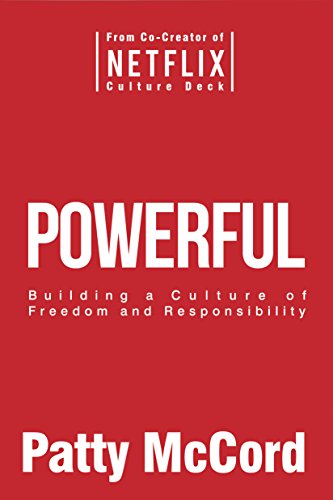April 2019

Netflix has been an amazing superstar in the US stock market. Not only has it grown monumentally in the domestic market, but it has also rapidly expanded globally. However, behind this stupendous financial performance is a mindboggling HR story that was revealed by Patty McCord, Netflix’s former Chief Talent Officer (CTO) in the book “Powerful: Building a Culture of Freedom and Responsibility”. Netflix is also known for its crazy “firing” and “flexible” culture. Patty and Netflix’s CEO Reed Hastings also shared a Netflix Culture Deck, which went viral on the internet and has been called as the “most important document ever to come out of the Silicon Valley” by Sheryl Sandberg.
In the book, Patty states that companies should adopt many new HR ways that radically challenge the conventional thinking. She shares the following principles:
- Get rid of “best practices”: Patty states that change is the only constant and thus, companies should always try to strip away lot of policies and procedures. The so called “best practices” of empowerment and employee engagement don’t work. Rather than having team-building activities, companies should practice open, clear, and constant communication that encourage radical honesty and motivates people to have strong fact-based opinion. She says that companies should frequently organize fact-based debates within the company to build an environment of radical honesty and open communication. The greatest achievements are driven by all team members understanding the ultimate goal and being free to creatively solve problems. She frequently states that people don’t want to be entertained at work, rather they want to learn.
- Every employee should be a business person: Patty believes that the best way for people to learn is by being in the game. Thus, companies should make employees understand not just a particular work but also the larger story of how the business works, the challenge company faces, and the competitive landscape. Truly understanding business is the most valuable learning and way more productive than the “employee development” trainings. Business knowledge should not be limited to MBAs.
- Hiring and firing isn’t bad: The book tells that managers should relentlessly think about the future and the kind of team they would need. They should make hiring decisions based on their envisioning of the future. Also, managers should treat employees as a sports team rather than a family – keep teams agile and scout for new talent. Team success should not be measured by retention but by the fact that how many people exist with the right skillset.
- Annual performance reviews are slow for today’s world: Patty considers annual performance review as a waste of time and resources and feels that companies should de-link the compensation and performance evaluation system. She says that companies should offer incentives considering how much valuable the person is for the company’s future needs. Companies should put more emphasis on future needs rather than past performance.
--- Jay Jani
Jay Jani is a Masters student attending Maybs Business School